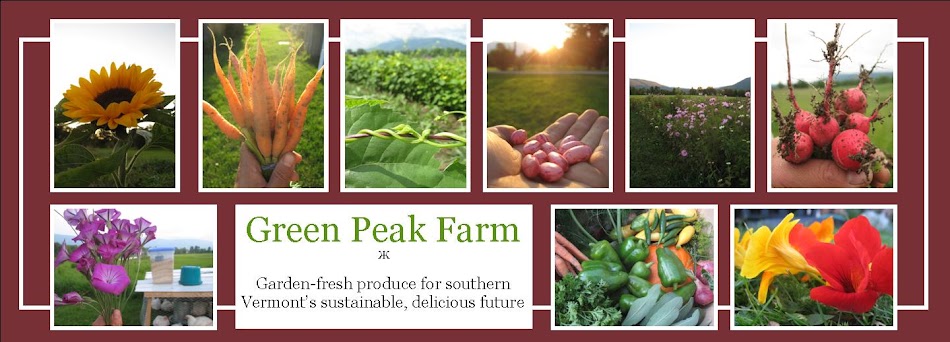Howdy!
This past week has been a busy one for the garden-- the break in the heat has made all the difference, and the onions, squash, and cucumbers are really loving the scattered showers. Pickling cucumbers, and my absolute favorite garden harvest, a Middle Eastern cucumber variety (beit alpha type), are here, and will be happily making their debuts in your share. I've been looking for recipes for the cukes when I'm inside, then heading out to the garden only to realize that they never make it back inside to be prepared... Snack attack central.
Jeff and I have been making a lot of pizza-- the summer squash pairs beautifully with chevre and dill, and I think that'd be a great, simple appetizer...
Summer Squash Rounds
summer squash
olive oil
chevre
dill, basil, thyme, mint... any fresh herbs!
pinch of coarse-ground cornmeal
Preheat oven to 425. Sprinkle a pinch of coarse-ground cornmeal on a baking sheet to keep squash from sticking. Slice summer squash on the bias (so you get oval discs), and arrange on a baking sheet. Spoon a dollop of chevre on each disc of squash, add a drizzle of olive oil, and garnish with a sprig of dill (thyme, basil). [If using mint, add garnish AFTER baking, as mint loses its potency when heated.] Bake for ten minutes and serve hot.
Also, I heard a great idea for salad dressing on the "Splendid Table" last week-- nice and simple, but with powerful, different flavors, and a nice thick texture:
Mint Garlic Dressing
handful of fresh mint
three cloves fresh garlic
4 tablespoons rice wine vinegar
1 tablespoon maple syrup
4 tablespoons olive oil
cracked black pepper
Combine all ingredients in a food processor, whir away, and dress greens. I made this when I had some raspberries on hand, and tossed them in, as well, for a little twist. A small cooked beet would add a similar twist-- or the dressing would be great on sliced, cooked beets, too!
In your share this week:
cucumbers- slicers and picklers
sugar snap peas
beet greens/baby beets
summer squash
baby scallions
kale
bag of salad greens
basil
dill, thyme, sage
sunflowers and echinacea






